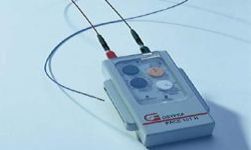Article
FDA Proposes Lower Risk Classification for External Pacemakers
Author(s):
External pacemaker pulse generators may be decreased in risk classification from Class III (high-risk) to Class II (moderate-risk), according to a statement issued from the US Food and Drug Administration (FDA).

External pacemaker pulse generators may be decreased in risk classification from Class III (high-risk) to Class II (moderate-risk), according to a statement issued from the US Food and Drug Administration (FDA).
The agency stated that reclassifying the external pacemaker pulse generators will clarify the risk of such devices to physicians and surgeons, and will hopefully aid practitioners with future recommendations.
Used on a temporary basis prior or following heart surgery, external pacemaker pulse generators regulate a patient’s heart rate until a permanent pacemaker can be inserted. They can also be used after heart attacks to aid in controlling irregular heartbeats.
The FDA stated that it had reviewed the general controls involved with the product and found sufficient evidence to support the proposal to lower the risk classification.
“The FDA has assessed the benefits and risks of external pacemaker pulse generators,” reported Christy Foreman, director of the Office of Device Evaluation at the FDA’s Center for Devices and Radiological Health (CDRH).
But general controls (which regulate how and for what purpose the product shall be made) are not enough on their own to guarantee the safety and efficiency of Class II devices.
Special controls are required on top of general controls for Class II devices, which may involve special labeling requirements, obligatory performance standards, and postmarket observation.
“The special controls outlined in this draft guidance, along with general controls, will assure the safety and efficacy of these devices and provide manufacturers with a more predictable path to market,” Foreman stated.
External pacemaker pulse generators are considered “preamendment” devices because they have been on the market since before the Medical Device Amendments Act of 1976.
Roughly 100 preamendment device types were initially classified as Class III devices but were reviewed under the 510(k) program because the FDA did not construct a policy requiring applications for premarket approval (PMAs) until 2009, when Class III preamendment device types were reviewed for potential reclassification.
The external pacemaker pulse generators are one of the last few Class III preamendment devices to be reviewed and potentially reclassified; after this, there are 21 other devices left to review.





